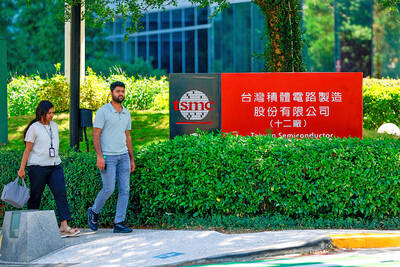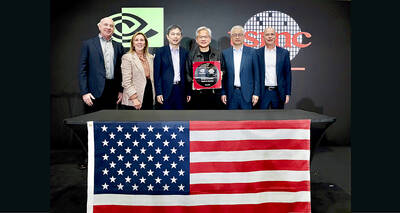A robot could answer your next call to tech support, thanks to new artificial intelligence (AI) research at Google. The company taught computers how to have context-sensitive discussions with people about issues ranging from philosophy to routine information technology (IT) help-desk tasks. It was outlined in a research paper published by the company last week.
Unlike traditional “chatbots,” Google’s system is built without hand-coded responses or assumptions about the world and instead learns to model language and conversation based on examples seen in corporate or public documentation.
“Even though the model has obvious limitations, it is surprising to us that a purely data-driven approach without any rules can produce rather proper answers to many types of questions,” according to the research paper.
The system can respond to questions and have long, complex conversations with people. In tests, it was able to help users diagnose and fix computer problems, including Internet browser and password issues.
The AI also taught itself how to respond to inquiries about morality and philosophy. The answers are coherent enough they might be mistaken for something a stoner roommate once said. (Sample conversation: “What is the purpose of life?” “To serve the greater good.” “What is the purpose of living?” “To live forever.”)
The machine is able to do this because it was designed to come up with an appropriate response based on context.
“These predictions reflect the situational context because it’s seen the whole occurrence of words and dialogue that’s happened before it,” Google senior fellow Jeff Dean said at a conference in March.
The system relies on what is called a neural network, which mimics some of the sensing characteristics of the human brain’s neocortex, along with a longer-term memory component to help it build an understanding of context.
The research is part of a larger effort within Google to develop conversational AI tools. DeepMind, a Google research group in London, has created an AI capable of learning how to play video games without instructions.
Geoff Hinton, a distinguished researcher at Google, is working on what is known as thought vectors, which distill the meaning of a sentence so they can be compared to other sentences or images. The concept helps power Google’s new Q&A project.
“If you can represent what someone is asking in a big vector, then you can start discovering the structure that exists between the big vectors in questions and answers,” Hinton said. “Now that we’re beginning to get sentences represented by big vectors, I think we’re going to make a lot of progress on more appropriate behavior in conversations.”
The vector endeavor may also tie into a nascent project named Descartes that Ray Kurzweil, a director of engineering at Google, is working on.
“We’re creating dialogue agents in Descartes,” Kurzweil said in a video presentation obtained by media. “One of the issues we’re grappling with is that these bots you interact with need to have their own motivations and goals, and we need to figure out what those are.”
Other technology companies and universities are embarking on their own projects in this field, including Microsoft, the University of Montreal and the Georgia Institute of Technology, which presented research. However, Google seems to have one crucial audience locked down.
In addition to the new IT robot with deep thoughts on existence, another well-publicized project from last week demonstrates how a Google AI can create “gorgeous, trippy artwork,” as GQ describes it.
Some doctorate students at Ghent University in Belgium have already adapted Google’s stoner AI into a Web-based system that infinitely zooms into an image composed of a machine’s dreams.

RECYCLE: Taiwan would aid manufacturers in refining rare earths from discarded appliances, which would fit the nation’s circular economy goals, minister Kung said Taiwan would work with the US and Japan on a proposed cooperation initiative in response to Beijing’s newly announced rare earth export curbs, Minister of Economic Affairs Kung Ming-hsin (龔明鑫) said yesterday. China last week announced new restrictions requiring companies to obtain export licenses if their products contain more than 0.1 percent of Chinese-origin rare earths by value. US Secretary of the Treasury Scott Bessent on Wednesday responded by saying that Beijing was “unreliable” in its rare earths exports, adding that the US would “neither be commanded, nor controlled” by China, several media outlets reported. Japanese Minister of Finance Katsunobu Kato yesterday also

‘DRAMATIC AND POSITIVE’: AI growth would be better than it previously forecast and would stay robust even if the Chinese market became inaccessible for customers, it said Taiwan Semiconductor Manufacturing Co (TSMC, 台積電) yesterday raised its full-year revenue growth outlook after posting record profit for last quarter, despite growing market concern about an artificial intelligence (AI) bubble. The company said it expects revenue to expand about 35 percent year-on-year, driven mainly by faster-than-expected demand for leading-edge chips for AI applications. The world’s biggest contract chipmaker in July projected that revenue this year would expand about 30 percent in US dollar terms. The company also slightly hiked its capital expenditure for this year to US$40 billion to US$42 billion, compared with US$38 billion to US$42 billion it set previously. “AI demand actually

Jensen Huang (黃仁勳), founder and CEO of US-based artificial intelligence chip designer Nvidia Corp and Taiwan Semiconductor Manufacturing Co (TSMC, 台積電) on Friday celebrated the first Nvidia Blackwell wafer produced on US soil. Huang visited TSMC’s advanced wafer fab in the US state of Arizona and joined the Taiwanese chipmaker’s executives to witness the efforts to “build the infrastructure that powers the world’s AI factories, right here in America,” Nvidia said in a statement. At the event, Huang joined Y.L. Wang (王英郎), vice president of operations at TSMC, in signing their names on the Blackwell wafer to

Taiwan-based GlobalWafers Co., the world’s third largest silicon wafer supplier, on Wednesday opened a 12-inch silicon wafer plant in Novara, northern Italy - the country’s most advanced silicon wafer facility to date. The new plant, coded “Fab300,” was launched by GlobalWafers’ Italian subsidiary MEMC Electronics Materials S.p.A at a ceremony attended by Taiwan’s representative to Italy Vincent Tsai (蔡允中), MEMC President Marco Sciamanna and Novara Mayor Alessandro Canelli. GlobalWafers Chairwoman Doris Hsu (徐秀蘭) said the investment marked a milestone in the company’s expansion in Europe, adding that the Novara plant will be powered entirely by renewable energy - a reflection of its